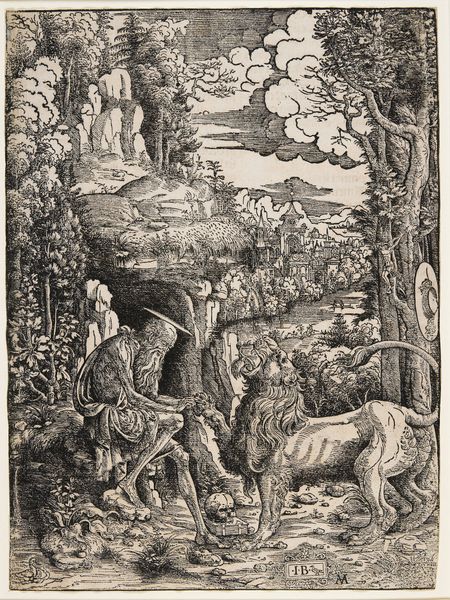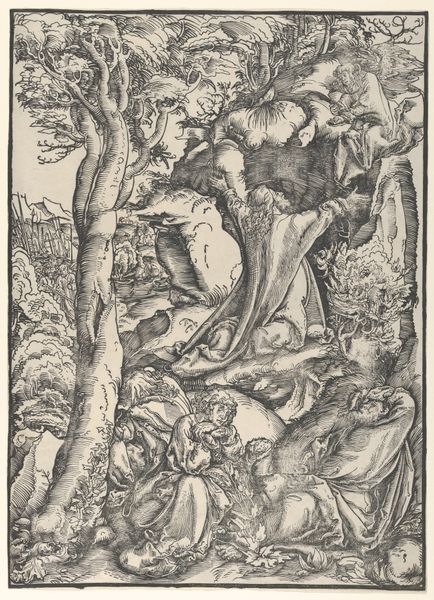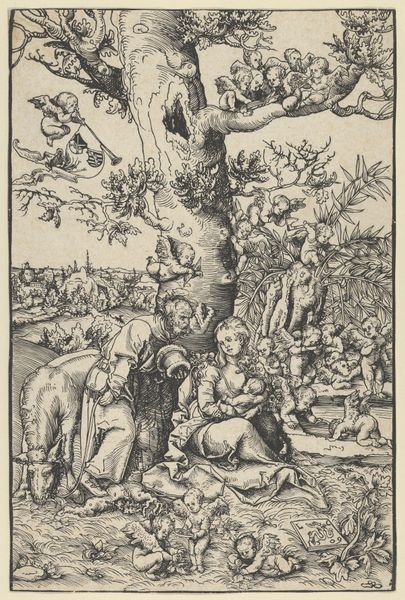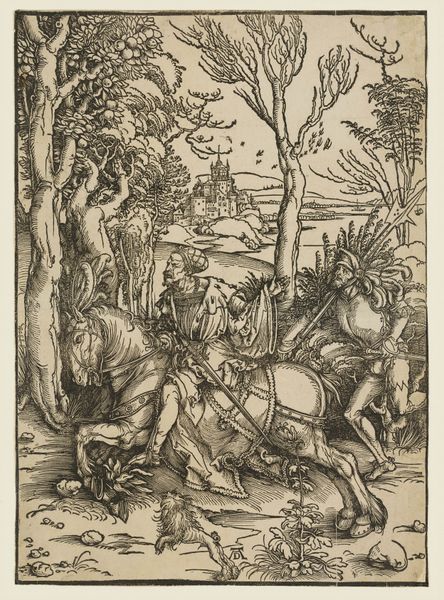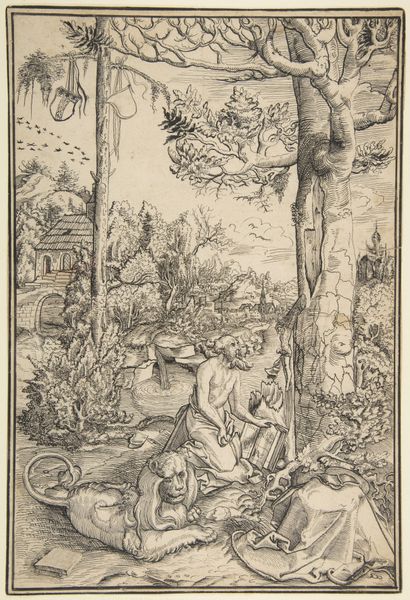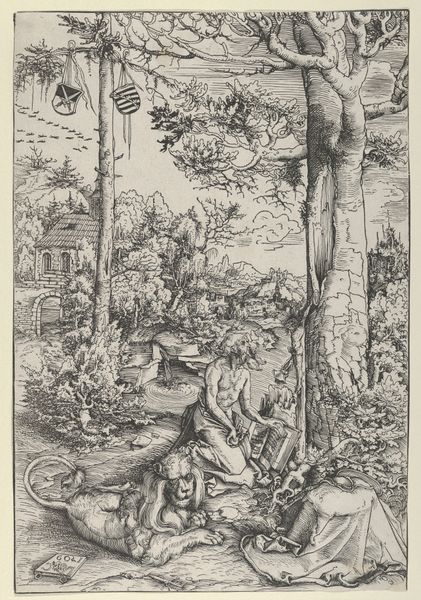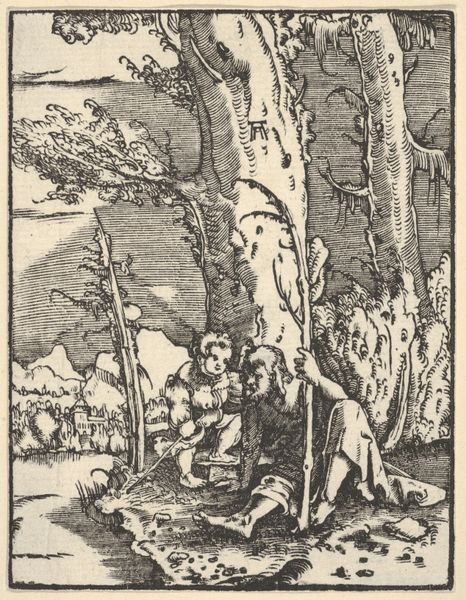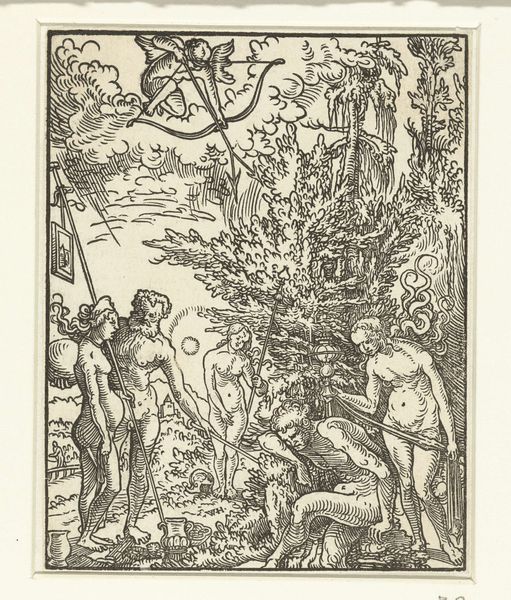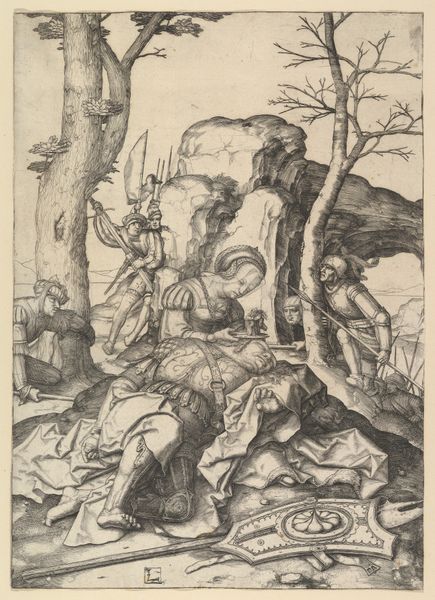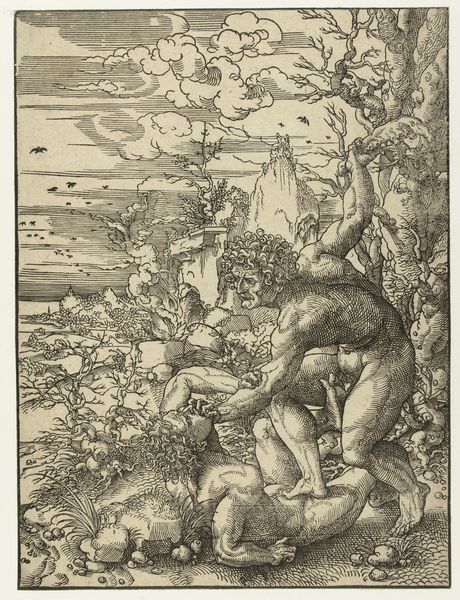
Zeus as an eagle, abducting Ganymede 1500 - 1510
0:00
0:00
drawing, print, engraving
#
drawing
#
allegory
#
pen drawing
# print
#
pen illustration
#
pen sketch
#
figuration
#
11_renaissance
#
horse
#
italian-renaissance
#
engraving
#
male-nude
Dimensions: Sheet: 14 3/16 × 9 13/16 in. (36 × 25 cm)
Copyright: Public Domain
Curator: Let's discuss this intricate engraving entitled "Zeus as an Eagle, abducting Ganymede" created by Giovanni Battista Palumba around 1500-1510, here at the Metropolitan Museum of Art. Editor: My first impression is one of intense, unsettling energy. The scene is chaotic, yet the figures are so meticulously rendered. The detail in the rendering of textures in the Eagle's feathers is incredible. Curator: Indeed. It's a prime example of the Italian Renaissance engagement with classical mythology and the symbolic weight such stories carried. Ganymede, being carried aloft, represents not just physical abduction but also perhaps the soul's ascent to divine favor. Notice how Palumba has used these figures in relationship with the ones left on the ground. Editor: From a material perspective, the engraving itself—the act of carving into the metal plate and transferring that image onto paper—creates a compelling tension. The artist used linear precision to convey the muscularity of the figures and the wildness of the landscape. It’s a medium forcing incredible skill. Consider the labor involved! The printing process, how it allowed for the widespread distribution of this very loaded, symbolic image… it changes everything. Curator: Absolutely. And if we dive deeper into the iconography, the eagle as a symbol of Zeus represents power and divine authority. The reaction of the figures left behind suggests human limitations in the face of godly whims. This isn't merely a depiction of abduction; it speaks to hierarchical structures prevalent during the Renaissance and beyond. The expressions communicate shock and disbelief in reaction to Zeus' sudden snatch. The dogs fighting or mating at the base serve to accentuate this by providing a view into the natural drives, both in counterpoint and unison. Editor: I keep returning to the process. Engraving allowed for duplication. Think about it - an artist imbuing labor and mythology for elite audiences, for collecting. The labor required to make each print is substantial, contributing to the commodification and circulation of these classical narratives. We often discuss "high art," but this challenges those categories when you consider the means of production and consumption. Curator: It's fascinating how Palumba encapsulates both the power of myth and the material realities of his time. I've always viewed the act of creation of an allegorical, cultural world in a singular image as a great achievement in cultural messaging. Editor: And for me, understanding the production helps contextualize its dissemination and reception. Both are key to its endurance.
Comments
No comments
Be the first to comment and join the conversation on the ultimate creative platform.
